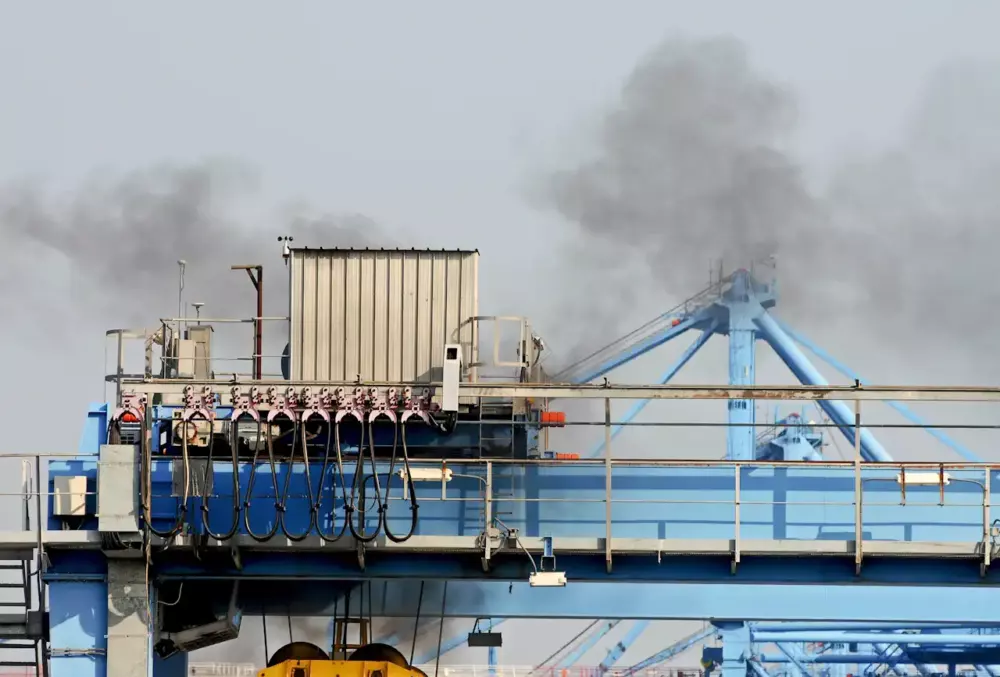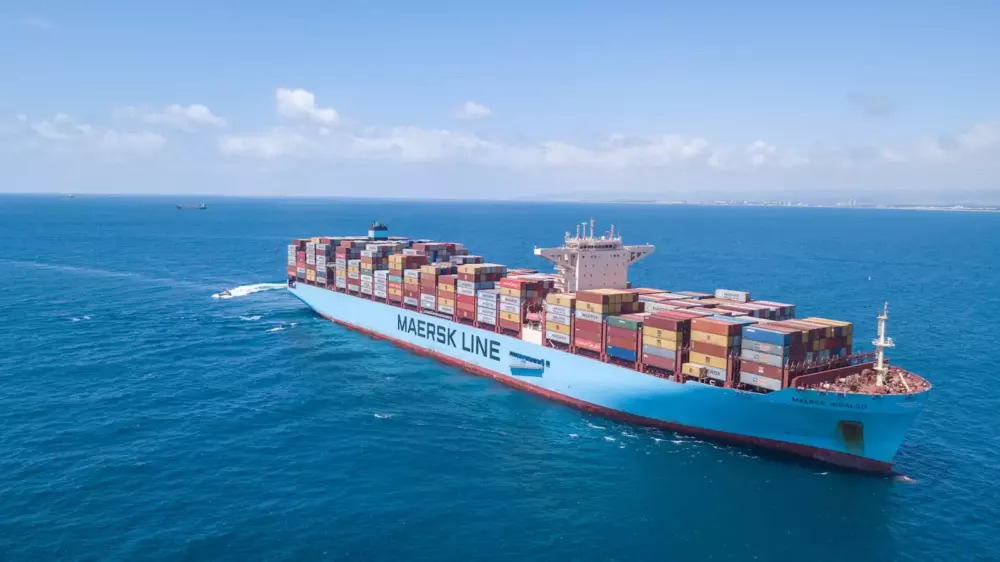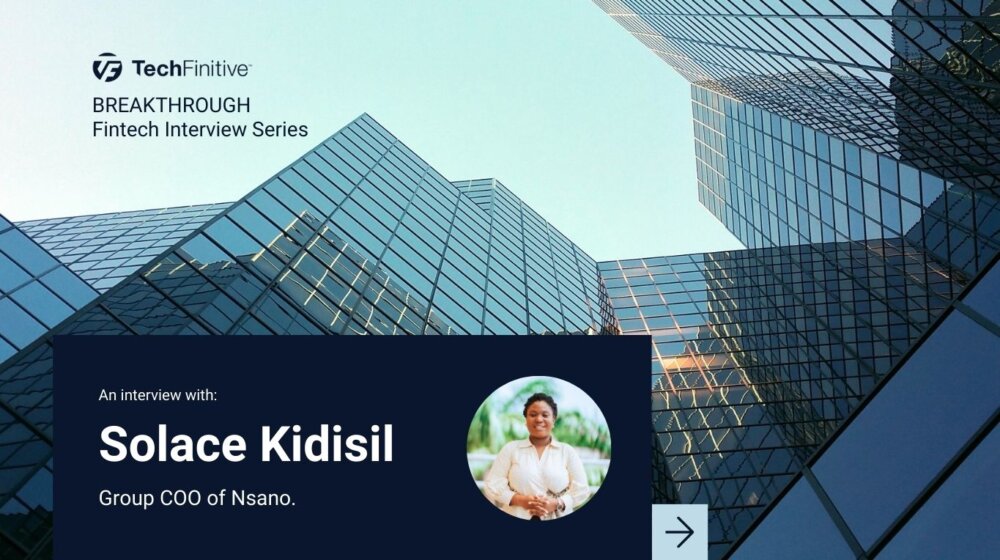
A greener supply chain is possible, but it will take innovation and cooperation
Table Of Contents−
Earlier this month, the United Nations agency that regulates shipping met at its London headquarters. Its remit: to discuss how the industry that powers the global supply chain will go greener over the next 30 years.
After two weeks of talks, the International Maritime Organization pledged to reach net-zero greenhouse gas emissions “by or around” 2050. Environmental groups quickly criticised the decision as not ambitious enough, but the fact that all 175 member states even agreed to the target shows how much ocean freight has fallen under the green spotlight.
“It is in many ways a starting point for the work that needs to intensify even more over the years and decades ahead of us,” IMO Secretary-General Kitack Lim said when the agreement was announced.
It’s a big change for an industry that moves 90% of world trade. Though shipping and air travel each account for roughly 3% of worldwide emissions, the scrutiny they’ve faced has been far from equal. Flight-shaming groups have attempted to shut down airports and France has banned short-haul flights, while shipping has largely sailed on unnoticed.
But as they face more scrutiny, ports and shipping companies are strategizing how to be more sustainable while not impeding the global conveyor belt of goods. A conveyor belt that brings you everything from the phone in your hand to the chair you’re sitting on. Some innovations, such as powering docked ships from onshore sources, are happening now. Other steps will take much more work.
Green spotlight shines on shipping
Kristi McKenney, the chief operating officer of the Port of Oakland in California, attributes the attention gap between air travel and shipping to simple familiarity. Anyone that has flown in an aeroplane likely recognises that it burns fossil fuels. Seaports and oceangoing ships have been more out of sight, out of mind.
The Covid-19 pandemic, however, changed that dynamic. As the supply chain struggled to keep up with an explosive growth in online shopping — and as fleets of container vessels queued in harbours to unload — more people began to realise the industry’s environmental footprint.
“It’s actually quite remarkable how little people thought or were aware of the fact that everything they go into a store and buy, or at least a very large percentage, came on a ship to wherever they are in the world,” McKenney said. “Those things come in these really huge vehicles that burn a lot of fuel.”
The largest port in the San Francisco Bay Area, and the ninth largest in the United States, Oakland handled 2.34 million containers in 2022. Or nearly 99% of all goods passing through Northern California. That volume, combined with the Golden State’s evolving regulations on emissions, makes Oakland an ideal place to test new methods of sustainability.
Like many ports around the world, though, its efforts to go greener will take cooperation with multiple players. The Port entity owns the land and provides oversight, but separate companies lease the wharves and do the heavy work of servicing the ships.
“We’re working with our tenants because a lot of the [emitting] equipment is their equipment,” McKenney said. “And a lot of the most challenging equipment is their equipment.”
Going electric… on land
Though port equipment contributes a smaller share of emissions than ships burning diesel oil, they’re the easiest places to start cutting emissions. Oakland is transitioning its own small vehicle fleet to hybrid or electric, and tenant SSA Marine cut emissions by 93% after converting its 13 gantry cranes to hybrid power.
The huge vehicles that load and unload shipping containers, move them around the docks and pile them into stacks will take more work. While electric cars are everywhere on the road, alternative fuel technologies for giant equipment such as tractors and top lifts that work around the clock in punishing environments are still nascent.
“This equipment is just being invented as we speak,” McKenney said. “The early pilots have been challenging because you’ve got an expert battery manufacturer trying to build a truck around it.”

To hasten the development cycle, the Port is promising tenants that it will fund some of the costs for converting vehicles to electric power. In turn, manufacturers know there will be a market for new technology that will take money to design, test and build.
“By building that partnership and putting money on the table we’re saying, ‘This will be a profitable business for you to get into,’” McKenney said. “We also don’t want to be caught at the end of a long line years from now.”
Other land-based initiatives
A push to zero-emissions is coming in other ways, as well. In March, the Port asked tenants to submit a zero-emissions plan by the end of the year, and by 2035 California will require heavy vehicles operating in ports to be zero-emissions.
Not every solution is a decade away. Like other ports in California, Oakland is now required to provide power to ships while they’re docked. (The UK and EU are considering similar legislation.)
By not running its engine to power onboard systems while berthed, ships won’t belch smoke that blows over the port and into nearby communities. Think of it like plugging your caravan into a power outlet at a campground.
But even that effort took a fair bit of work to implement when California adopted the policy in 2008. Building the onshore infrastructure to deliver the power wasn’t easy given that ships vary radically in size and their power connection ports aren’t always in the same place.
“We literally have to invent a technology to solve the problem,” McKenney said. “But that’s something a port could do.”
Changes at sea
Also to come are electric tug boats. A handful currently operate in Auckland, Istanbul, and Lianyungang, China, and the first in the United States will arrive in San Diego later this year.
Powering a 400-metre long ship that carries 20,000 containers across the ocean, however, requires a bit more juice – between 200 to 400 metric tonnes of fuel per day. A battery won’t cut it, which leaves other possible alternative fuels such as hydrogen, methanol and ammonia.
Though Maersk has ordered 12 methanol-powered ships, hydrogen may be the leader in the long run. In a 2021 report, Bill Reinsch, a senior adviser at the Center for Strategic and International Studies, called it “the most promising clean fuel option for the global shipping industry.”

Putting aside any Hindenburg-fueled fears of hydrogen for the moment, it brings several advantages. It’s the most abundant element in the universe, it’s already produced for industrial use in large quantities, it can be stored for long periods of time, and existing hydrogen fuel cells can be adapted to work on ships.
Of course, hydrogen isn’t without its challenges. Yes, it’s still flammable, and crews will need to learn to handle the new fuel since it must be stored at -253°C. That’s only 20°C warmer than absolute zero.
Hydrogen fuel cells also will take up more room on a ship than oil fuel tanks, but in his report Resinsich estimated that as little as 5% of cargo space would be lost. In any case, the benefits will come.
“Hydrogen fuel cells are relatively quiet, limiting noise pollution, and only release water vapour and oxygen as byproducts, virtually eliminating air pollutants during fuel consumption,” he said.
And back to the ports
If and when hydrogen ships do become viable, ports will have to create the infrastructure to serve them. Beyond deciding where alternative fuels will be produced, they’ll need to build facilities to store it onshore and plan how it will be delivered to the docks.
Whatever work is needed, McKenney says the rewards of being more sustainable will extend beyond just meeting emission targets from the IMO and governments around the world. As ports ponder protecting themselves from sea level rise due to warming temperatures, cutting emissions will only help in that battle in the long run.
A cleaner port will also benefit people that work there and those that live in surrounding communities, which tend to be lower income and disadvantaged. Though ports are huge economic drivers for cities and provide thousands of jobs, a balance will need to be struck.
“The entire world is learning,” McKenney said. “We need to create our economic impact while also benefiting the environment.”
NEXT UP

Slow buyers cause tech firms to rethink sales approaches as tough Q1 hits home
New research suggests tech sales were slow in Q1, with buyers of technology and professional services taking their time before committing to any solutions.

ByteDance says it has no plans to sell TikTok and refuses to bow to US pressure
ByteDance, the Chinese company that owns TikTok, stated that it “doesn’t have any plans to sell TikTok” on Toutiao, a social media platform that it also happens to own.

Solace Kidisil, Group COO of Nsano: “The difference between traditional finance and fintech is the questions we ask”
We interview Solace Kidisil, Group COO of Nsano, a fintech company from Ghana, offering digital payment solutions across Africa
